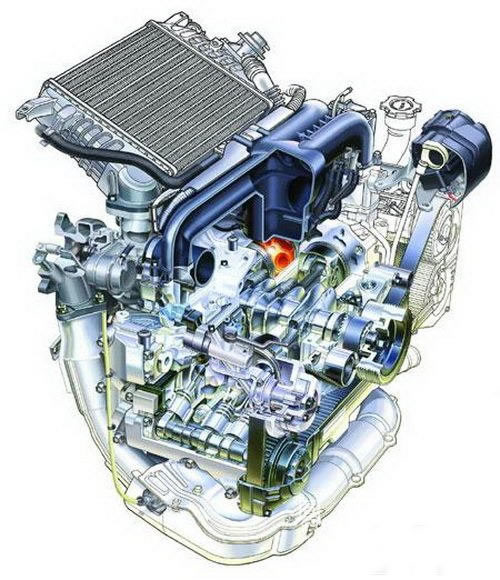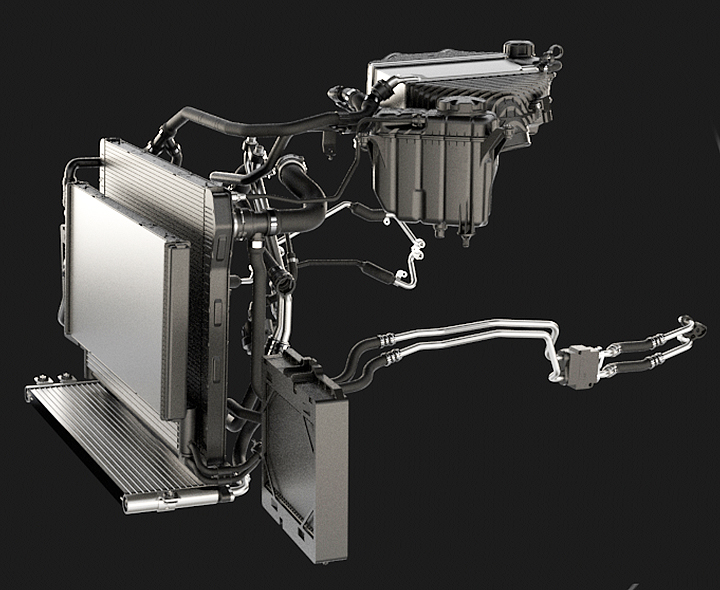Fault diagnosis and maintenance of automobile engine cooling system (一)
2021-08-05
The cooling system is an important part of the engine. According to relevant information, about 50% of automobile faults come from the engine, and about 50% of engine faults are caused by cooling system faults. It can be seen that the cooling system plays an important role in automobile reliability. The cooling system will not only have a significant impact on the reliability of the engine, but also an important factor affecting the power and economy of the engine. Its function is to ensure that the engine can work normally and reliably at the most suitable temperature under any load condition and working environment.
Automobile fault: abnormal temperature and overheating during vehicle operation.
Fault detection: to make the engine work reliably and durable, the cooling system must make the engine work within the most suitable temperature range under any working state of the engine and any possible ambient temperature. Ensure that the engine works within the appropriate temperature range.

Fault detection 1: thermostat fault
(1) Check the temperature rise rate of cooling water. Observe the instrument panel water temperature gauge. If the water temperature rises slowly, it indicates that the thermostat is not working normally. After inspection, the water temperature rise speed is normal.
(2) Check the water temperature of the radiator, insert the sensor of the digital thermometer into the water tank, measure the temperature of the upper water chamber and the reading of the water thermometer (engine water jacket temperature) and compare them. Before the water temperature rises to 68 ~ 72 ℃, or even shortly after the engine starts, the water temperature of the radiator rises together with the water temperature of the water jacket, indicating that the thermostat is poor. There is no such phenomenon after inspection.
Test result: the thermostat works normally.
Fault detection 2: engine overheating caused by insufficient cooling water The engine cooling system cannot hold the specified amount of water, or the engine overheats due to abnormal cooling water
consumption during operation. Analysis and diagnosis:
(1) Check that the cooling water capacity is sufficient. If the radiator is good, remove the engine water tank and check the scale deposition in the water pipe. The accumulation is not serious, but there is a certain scale.
(2) Extend a clean wooden strip to the drain hole, and no water trace on the wooden strip indicates that the water pump is not leaking.
(3) Check whether there is water leakage inside the cooling system. Pull out the oil dipstick. If there is no water in the engine oil, eliminate the possibility of rupture and water leakage in the valve chamber wall or the inner wall of the air inlet channel. Check whether the exhaust valve of the radiator cap fails. If the cooling water is easy to splash out from the water inlet, it indicates that the exhaust valve of the radiator cap fails. Check that there is no above phenomenon and eliminate the possibility of exhaust valve failure.
Test results: water tank scale deposition may cause insufficient cooling water.
Fault detection 3: insufficient heat dissipation caused by other radiator faults. Consider faults caused by other radiators. Analysis and diagnosis:
(1) First check whether the shutter is open or closed. If it is not closed, the opening is sufficient.
(2) Check the fixing of the fan blade and the tightness of the belt. The fan belt rotates normally. Check the air volume of the fan. The method is to put a thin paper in front of the radiator when the engine is running, and the paper is firmly absorbed, indicating that the air volume is sufficient. The direction of the fan blade shall not be reversed, otherwise the angle of the fan blade shall be adjusted, and the blade head shall be properly bent to reduce eddy current. The fan is normal.
(3) Touch the radiator and engine temperature. The radiator temperature and engine temperature are normal, indicating that the cooling water circulation is good. Check that the radiator outlet hose is not sucked and deflated, and the inner hole is not delaminated and blocked. The water outlet pipe is in good condition. Remove the water inlet hose of the radiator and start the engine. At this time, the cooling water should be discharged forcefully. Failure to drain indicates that the water pump is faulty. Check whether the temperature of the radiator and all parts of the engine is uneven, and the cold and heat of the radiator are uneven, indicating that the water pipe is blocked or there is a problem with the radiator.
Test results: the water pump is faulty, the water pipe is blocked or the radiator is faulty.


